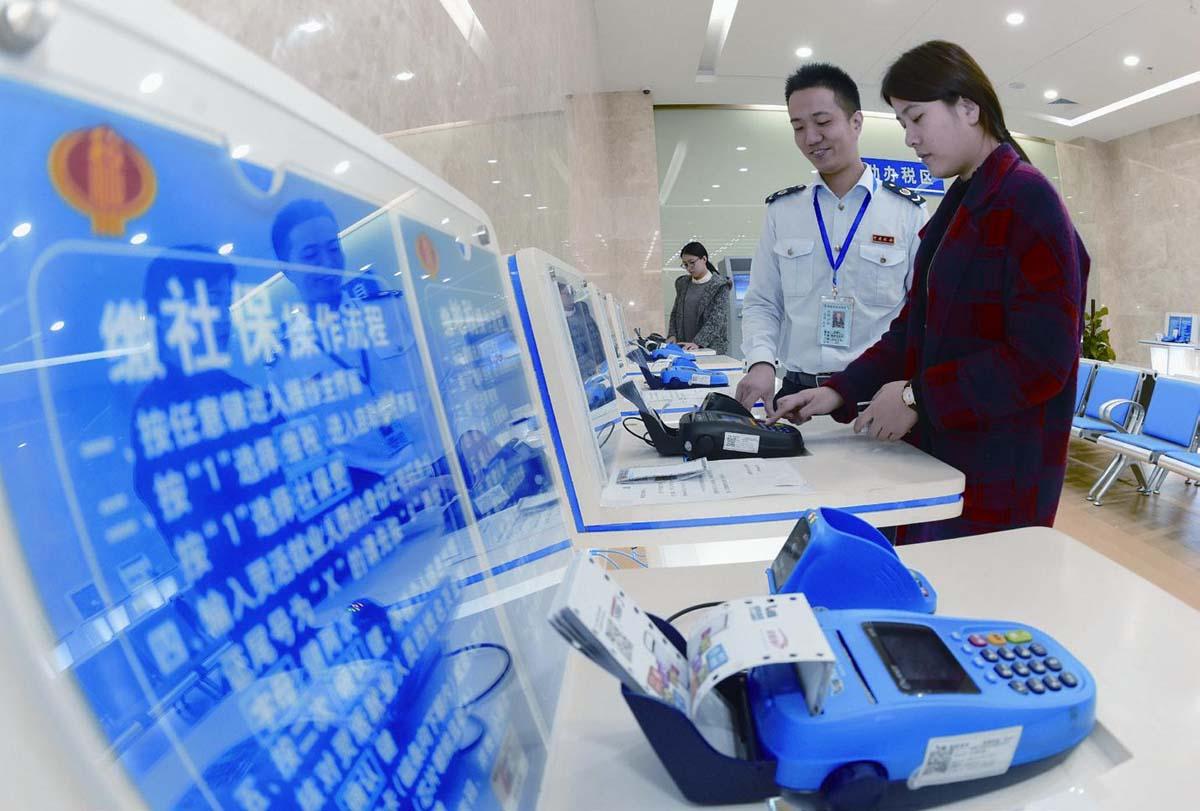New Pension Source
By Wang Jun


As the Chinese Government moves to alleviate corporates fi nancial pressure by reducing their contributions to social insurance schemes, new measures have been issued to support this move. On July 10, a State Council executive meeting decided to further intensify the transfer of state capital into the social security funds.
The third batch of 35 state-owned enterprises (SOEs) will transfer assets to the funds, bringing the total of the 59 SOEs overseen by the State-Owned Assets Supervision and Administration Commission of the State Council (SASAC) in three batches to an estimated transfer of 660 billion yuan ($95.8 billion), said Lu Qingping, head of the Asset Management Department of the Ministry of Finance (MOF), at a policy briefi ng in Beijing on July 19.
Nationwide implementation
In 2018, two batches totaling 18 of SASACadministered SOEs and six financial institutions supervised by the MOF transferred 130 billion yuan ($18.9 billion) of state capital to the pension funds, according to a report by 21st Century Business Herald. This was in response to a plan issued by the State Council at the end of 2017. According to the plan, state-owned and state-holding large and medium-sized enterprises and fi nancial institutions should transfer 10 percent of their shares to the social security funds.
The National Council for Social Security Fund (SSF) is authorized to hold the shares of centrally administered SOEs. The plan said the council can set up a pension management company specially operating the transferred shares when conditions are mature. Provincial governments can establish state-owned companies to manage the shares of local SOEs or entrust companies that have the capacity to run state-owned assets to manage the transferred shares.
For example, China Reinsurance (Group) Corp. announced in April 2018 that its second largest shareholder, the MOF, was transferring 10 percent of the equity it held in the company to the SSF on a one-time basis.
In December 2018, the Peoples Insurance Co. (Group) of China Ltd. (PICC) also announced that the MOF was transferring 10 percent of its equity in the company to the SSF.
“There were transition costs when China started the reform of the social security system in 1997. However, it was hard to properly estimate such costs beforehand, leading to a heavy burden on the entire pension insurance system,” Zhu Junsheng, Deputy Director of the Insurance Research Office under the Development Research Center of the State Council, told 21st Century Business Herald.

“The government has recently reduced the corporate social security contributions to alleviate their burden. Against this backdrop, speeding up the replenishment of the social security funds through the injection of state capital is the only solution to make the funds sustainable,” Zhu said.
In his Report on the Work of the Government to this years session of the National Peoples Congress, Chinas top legislature, in March, Premier Li Keqiang said the tax burdens on and social insurance contributions of enterprises will be cut by nearly 2 trillion yuan ($298 billion) this year.
Since May, employers share of endowment insurance for urban workers has been reduced to 16 percent from 20 percent nationwide. In the fi rst half of the year, reduced social security contributions saved companies a total of 67.6 billion yuan ($9.8 billion), said You Jun, Vice Minister of Human Resources and Social Security, at the policy briefi ng.
Lu said on the same day that along with pilot programs in Zhejiang and Yunnan provinces, many other provincial-level regions are also making preparations for the transfer of state capital such as conducting surveys and devising implementation schemes.
“The 59 large companies selected for state capital transfer have a sound business performance, accounting for more than half of the total number of centrally administered SOEs qualified for the program,” said Wen Zongyu, head of the Public Assets Research Center of the Chinese Academy of Fiscal Sciences, in an interview with 21st Century Business Herald.
Challenges ahead
After the transfer, the SSF will enjoy the earnings from the shares they hold, which will mean the reduction of the profi ts retainable to the SOEs. “This may be a major reason for the slow progress of the reform,” Zhou Lisha, a research fellow with the Bureau of Research of the SASAC, told The Time Weekly.

“The government has recently reduced the corporate social security contributions to alleviate their burden. Against this backdrop, speeding up the replenishment of the social security funds through the injection of state capital is the only solution to make the funds sustainable.”
—Zhu Junsheng, Deputy Director of the Insurance Research Offi ce under the Development Research Center of the State Council
Wang Jiang, a senior economist with the SASAC Bureau of Research, said in an analysis piece that according to a decision made by the Third Plenary Session of the 18th National Congress of the Communist Party of China, by 2020, 30 percent of the earnings of state-owned assets must be turned over to the government. Meanwhile, 10 percent of the equity in state-owned companies and fi nancial institutions will go to the social security funds. Such a distribution model may increase the burden on SOEs.
Moreover, against the backdrop of increasing uncertainties and economic downward pressure this year, it is not easy for centrally administered SOEs to reach the profit growth target of 9 percent, and the transfer of state capital by companies in the industries with surplus capacity or the energy industry may be affected, Zhou noted.
“Some centrally administered SOEs are still suffering losses. Currently, their equity rights will not bring dividends to the social security funds. In some cases, the equity in some heavily indebted SOEs have been retained by banks as pledges for loans or are frozen by courts, making property rights unclear. In addition, since the mixed ownership reform, which allows private or even foreign investment in state-owned companies, and the reorganization of SOEs are still underway, the transfer of state capital into the social security funds must be connected with such reforms. Therefore, the program cannot be fi nished in a single batch,” Wen said.
According to the latest fi gures from the MOF, the total owners equity in all centrally administered SOEs, excluding fi nancial institutions, is 27 trillion yuan ($3.9 trillion). If 10 percent of the equity is transferred to the social security funds, the total should be 2.7 trillion yuan ($392.3 billion).
The transfer will not change the current administrative system of state-owned assets, according to Lu. The SSF and designated local recipients will, as long-term financial investors, receive earnings mainly through stock appreciation, with no intent to interfere in the daily operations of the SOEs.

